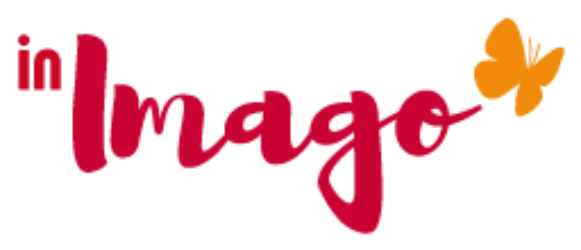In Imago starter offers you a common thread to support you step by step in your digital transition and your strategic management. It is a proposal to re-visit practices and tools. It is a common thread to wander through all the resources contained in this site and, we hope to bring you some help in building self-determined teams
We saw in starter # 1, the creation of your vision, mission, values trilogy. In starter # 2, how to make a digital transition. Starter # 3 invites you to make your goals come alive. In starter # 4 you will find tips for building a positive culture and, starter # 5 will be a set in motion of the system, as a global device of transformation.
Bring your goals to life
When creating your trilogy, Vision, Mission, Values you established a set of goals. These are benchmarks that will support your operational management and your teams in the deployment of software solutions, products and services that will allow you to arbitrate and develop your business. These are only benchmarks.
Freezing these objectives and making them mandatory becomes unproductive. Of course, without a goal there is no achievement. But here again, the classic concept must be reviewed. But what goal are we really talking about?
The seal between the world of work and the personal world has indeed cracked. A balance is sought in everything, All the time. The alignment behind the manager imposing to follow KPI’s to measure gaps and make the risk of failure predictable no longer works. Digital tools are multiplying to facilitate the grouping of information, organize monitoring, shake up our traditional sales channels, concatenating data between them and offering a strategic analysis of your market, your customers and the commitment of your employees to notoriety of the brand.
What are the objectives for?
The KPI- Key Performance indicator
Probably the best known indicator. It allows an organization to verify the achievement of the objective, the progress of a project and to ensure the passage of milestones.
Example of KPI :
Classic : Revenue generated, Net profit, Cash flow, Inventory turnover
e-Commerce : the basket abandonment rate; the connection time on the site
Training: number of registrants, percentage of satisfaction, attendance
Business Intelligence : the customer loyalty rate, the number of transactions by type of profile, the number of frauds …
The KVI- Key Value Indicator
The KVI makes it possible to analyze the value produced on the basis of a direct relationship between the characteristics of the product and the benefits that the user will derive from it.
- Conversion : conversion (%) on the website. Out of 100 visiteurs, how many buy from us.
- Daily active users : the number of users (millions) who use the app each day
- Daily active minutes : number of minutes (millions) the application is used.
- Manual actions (MA) : the number of manual actions that must be performed per week by office staff because the software does not yet fully allow it.
- Number of calls per week for 1000 customers (CPkC). Number of times 1000 customers call per week because the website is not very clear or the chat does not address the customer issue.
Focus on the OKR
The OKRs (Objectives key results), as their name indicates, direct attention towards the concrete results expected, depending on the role and the type of business. They define the vision (the “for what” as the company’s raison d’être) and invite us to verify the results obtained in relation to the vision. They challenge innovation as long as they do not become the declination of individual objectives.
You will find here some examples of OKRs from real-life experiences.
OKRs are successful because they focus the team’s attention on a common goal by setting clear objectives and measurable results. They have become a classic management method to challenge and motivate a team.
When well applied in a company, they will be limited to 3 in order to not dilute the effort and to remain achievable. The OKR must remain a way to focus on the value to be delivered and not become a sanction.
Delivery by value
The objectives are there to unite, to collaborate in an efficient and coherent manner. The drift between the intention set and integrated into an objective gives flexibility in the realization. The how does matter, it is the value produced and recognized by your customers that makes sense.
Lay the Intent
Setting the intention in a team helps clarify the goal to be achieved in a short-term goal.
The Impact Storming Game is an invitation to choose from the start our target and to determine what action we expect from our targeting.
For example, on an e-commerce site, if we want our client to recommend our site, the KVI will be the type of features or products recommended (the KPI would be the number of recommendations made but this is very vague to locate an immediate action)
The impacting action to be taken into account will be to organize the e-commerce site with a view to a targeted recommendation.
This obliges each member of the team to project the business strategy into its approach and to ensure its feasibility.
Lay the Ambition
Setting ambition allows us to determine for what purpose our actions will be used and to understand how our impactful actions will adjust to meet this long-term objective.
The ambition of the e-commerce site could be: to be recognized as the leader in customer experience in terms of accessories for dogs and cats
The recommendations targeted in short-term actions make it possible to see if the projected trajectory is the right one.
Indeed, if the site’s recommendations relate only to the quality of dog and cat food, perhaps it will be appropriate to consider a pivot towards this sector of activity? or in any case to analyze the cause-and-effect link between the intention and the act of purchase of our customer.
Manage interactions between teams
The challenge, HERE, is not to manage a team but to manage the interactions themselves. Management is shifting away in favor of efficient facilitation and support.
Re-learning to communicate, to listen actively in order to take into account individual or group emotions are the leitmotif claimed here.
The letters of nobility are given back to the interactions between individuals. Emotions are not taboo but shared, listened to see understood.
The confrontation is not a personal attack but a shared vision, broken down in such a way as to make decisions stronger and generate added value.
The notions of role are reasserted, in place of the functions which had their letters of nobility in the 20th century. Remember, role-playing games played in business schools on the theme “Don’t take yourself for your costume”, to an old Jacques Brel sound background “The monkeys” are more relevant than ever. Don’t be mistaken in your role, we are together committed to DO. The faire-faire now sounds fake. The search for the essentials, for everyone, leads the group.
Make your goals come alive
This is the opportunity to design together the expected attitude and to propose to challenge each other together on the working atmosphere that everyone expects::
- The intention in terms of business is clarified, establish one also in terms of working atmosphere,
- Identified behind this intention, the expected behaviors
- Discourage obsolete behavior by encouraging everyone to revisit their intention
- Allow everyone to establish the new behavior
- Celebrate new behaviors and move forward …
It is learning from your own behavior and that of each other.
Realize the intention
Achieving the goal is achieving.
To achieve this we have to consider the value produced collectively to deliver what is ready without waiting for a hypothetical GB from a possible manager, or even having to empty his backlog of things to do.
Men, for their part, take charge and see why they are committed. They prioritize action, finished work in continuous delivery. Men gain independence and promote the creation of value.
The Agile or Lean system is just there to facilitate the emergence of decision-making. It is an open working environment. It supports the identification of change, ideas, ownership of achievements and commitment of All.
If this is not the case, it is the work system that must be reviewed, and not change the teams.
Knowing how to give up
Goals are no longer followed without being questioned. The value of this goal itself and its why, are challenged daily. “The power to say NO” takes over here all its letters of nobility. This is the opportunity to revisit your strategy, and take the time to revisit each customer experience in order to project yourself.
The power to say No is to embrace change without following a plan. It is allowing yourself to review your tactical plan, and to revisit your objectives on a regular basis. It is also accepted to maximize the number of things not done! The backlog only makes sense if it is useful to someone. If obviously the tasks not done do not detract from customer satisfaction, perhaps we can review our principle of excellence and put our pride in our pocket by agreeing not to develop the unnecessary.
Learning to say No means accepting the wrong goal. This pretty much sums up the changes in our current world. The world is changing, fast. Digital is omnipresent. In front of us, a world of connected objects, all of which make our daily life easier, going so far as to monitor our health and take charge of our family. Knowing what you don’t want becomes essential for everyone.
“Knowing how to say No is accepting the wrong objective” seems to be a motto to be carried loud and clear in the coming months, or years. Our collective conscience will be an asset or an alienation in the face of this all-powerful Digital world. It’s up to us to choose!
Learn
First and foremost is learning not to blame yourself. Celebrate the unnecessary, the things not done as proposed in the Agile Manifesto. It is learning from yourself and from others.
The words retrospective, Lessons Learned, best practices have no post-mortem value here. They are used here, not to learn from the past but to IMMEDIATELY implement all effective solutions to “Get the Most Out”. Fail fast is an option, to learn quickly and find a way, rotate and bounce back.
Learning is conjugated in the Present. Learning is more essential than ever for survival. Master the real information, use knowledge, connect it to each other, and pool it, to LIVE better your project, its projects. To EXPERIENCE, alone or together.
“Inertia is our enemy” Claudio Perrone reminds us with PopCorn Flow. The image of Popcorn transforming under high heat, and emerges cheerful giving birth to Popcorn. Each Popcorn is a continuous stream with so many ideas, opportunities to learn and to test. It offers us an opportunity to experience continuous change …
But to learn, to experiment and to test, it takes time. So why not formalize this time by giving each employee the time they need to do more than just a validated task. Invite the collective so that everyone can do simply and create value for all.

